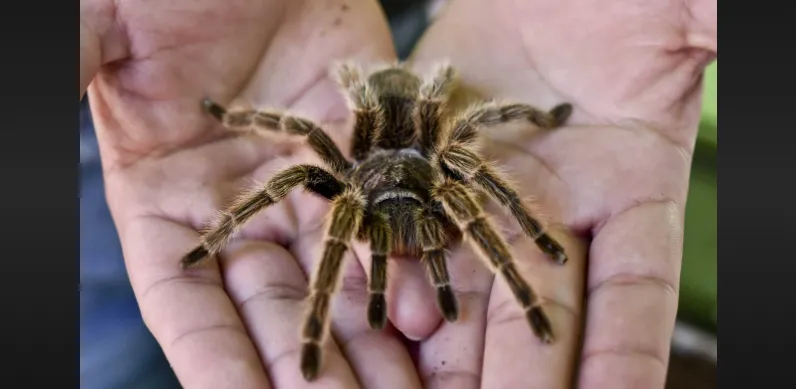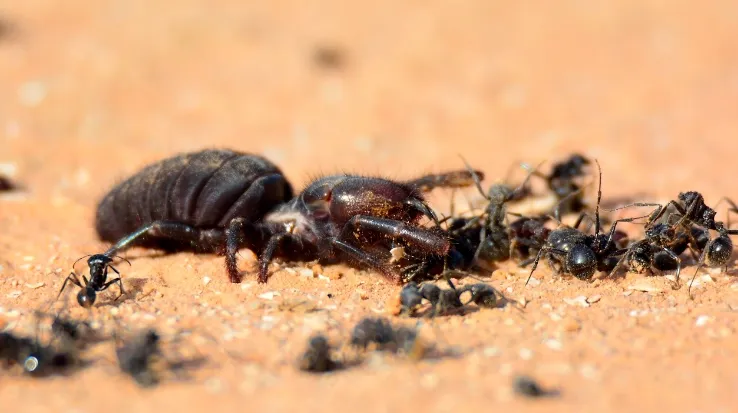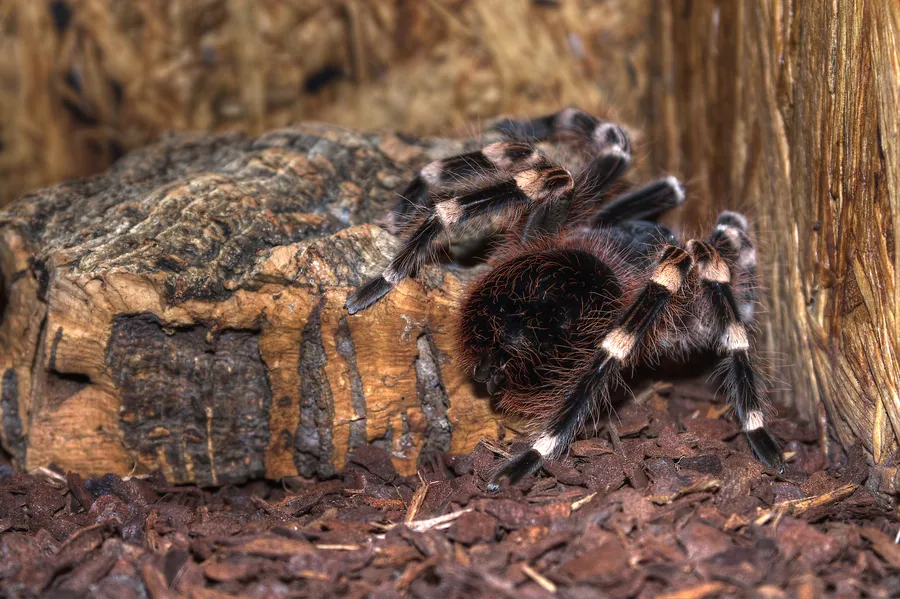Tarantula Speed: Top 5 Fast Facts
Tarantulas, with their impressive size and captivating presence, often spark curiosity about their capabilities. One of the most intriguing questions revolves around their speed. How fast can these hairy arachnids really move? This article delves into the fascinating world of tarantula locomotion, providing five key facts about their speed and the factors that influence it. From their hunting strategies to the variations among different species, discover what makes these creatures surprisingly swift and how they navigate their environment. Prepare to uncover some myths and gain a deeper understanding of these amazing animals.
Fact 1 The Speed Spectrum of Tarantulas
Tarantulas are not typically known as speed demons in the animal kingdom, but they can move surprisingly quickly when the need arises. Their speed isn’t the same as a cheetah’s sprint, but it’s enough to catch prey, evade predators, and navigate their environment effectively. The speed of a tarantula is usually measured in terms of how many body lengths they can cover in a second. The average speed can vary significantly, depending on the species, the terrain, and the tarantula’s current activity. For example, a tarantula might move at a moderate pace during normal foraging, but it can burst into a sprint when threatened or when pursuing prey. This flexibility in speed allows them to adapt to different situations and survive in various habitats.
Factors Influencing Tarantula Speed

Several factors play a crucial role in determining a tarantula’s speed. The first is the tarantula’s physical build. Larger tarantulas, with their more massive legs, can sometimes generate more power but might sacrifice some agility. The terrain also has a major impact. Smooth surfaces can allow for faster movement compared to rough, uneven ground. The overall health and age of the tarantula also affect its speed. Younger, healthier tarantulas tend to be more agile. Environmental conditions, such as temperature, can also influence speed; tarantulas are generally more active and faster in warmer environments. Finally, the tarantula’s motivation is a key determinant; whether it’s hunting, escaping danger, or simply exploring, its speed will adjust accordingly.
Fact 2 Average Tarantula Running Velocity
While it’s difficult to provide a precise average speed for all tarantula species, the general range of a tarantula’s speed is noteworthy. Most tarantulas can reach speeds up to 1 to 3 miles per hour (1.6 to 4.8 kilometers per hour) over short distances. This might not seem incredibly fast, but considering their size and the environments they inhabit, it’s a respectable pace. Some species, particularly those that live in open habitats or are more active hunters, might be able to achieve bursts of speed slightly exceeding this range. Keep in mind that this speed is typically sustained only for short periods, as tarantulas are not built for prolonged high-speed travel. Their primary mode of locomotion is a combination of walking and short bursts of running, using their legs to rapidly propel themselves forward.
Comparing Tarantula Speed to Other Creatures
To put a tarantula’s speed into perspective, comparing it to other animals can be helpful. For instance, the average human walking speed is around 3 miles per hour, putting tarantulas in a similar speed range. Compared to other arachnids, such as wolf spiders, tarantulas are generally not as fast. Wolf spiders are known for their agility and quick bursts of speed, which they use to hunt prey. When compared to mammals or birds, tarantulas are, of course, much slower. Animals like cheetahs, falcons, or even rabbits can achieve much higher speeds. However, the tarantula’s speed is sufficient for its needs, allowing it to effectively hunt, avoid predators, and traverse its environment.
Fact 3 How Tarantulas Hunt

Tarantulas are primarily ambush predators, meaning they often wait for their prey to come within striking distance. They use their speed to quickly pounce on their targets once the prey is close. They have excellent senses and detect vibrations in the ground to determine the location of potential meals. Once a prey item is identified, the tarantula will either launch a direct attack or, in some cases, stalk the prey using a combination of stealth and bursts of speed. They use their fangs to inject venom, which paralyzes or kills the prey. After the prey is subdued, the tarantula uses digestive enzymes to break down the tissues, enabling them to consume the liquefied meal. The quickness to strike is a crucial part of this hunting strategy.
Speed Advantage in Hunting
The ability of a tarantula to move quickly provides a distinct advantage in hunting. Their speed allows them to react swiftly to opportunities, enabling them to surprise prey and reduce the chances of escape. Tarantulas have a relatively slow metabolism, so conserving energy is important. Their ability to use short bursts of speed when needed is more energy-efficient than maintaining a high speed all the time. This approach is particularly useful for capturing fast-moving insects, small rodents, or other creatures they commonly prey on. They can quickly close the distance and seize their meals before the prey can react effectively, ensuring their survival. The quick strike also minimizes the risk of injury from struggling prey.
Fact 4 Types of Tarantulas and Their Speed
Different species of tarantulas exhibit varying levels of speed and agility. Some species, such as those that are more terrestrial and live in open habitats, might be faster than others. Arboreal tarantulas, which live in trees, may have different adaptations that prioritize climbing ability over raw speed. The size of the tarantula plays a role as well. Larger tarantulas may have more powerful legs, but their mass can sometimes hinder their ability to move swiftly. The habitat and the type of prey also influence speed. Species that need to chase down active prey might evolve to have greater speed capabilities than those that ambush slower-moving insects. This diversity highlights the adaptability of tarantulas and how their movement capabilities are shaped by their environment and lifestyle.
Variations in Speed Across Species

Variations in speed are evident across different tarantula species. For example, some of the more active, ground-dwelling species have been observed to sprint over short distances when hunting or evading threats. In contrast, species that spend more time in burrows or are less active generally do not exhibit the same rapid movement. This diversity is a result of evolutionary adaptations to different environments and hunting strategies. The specific physical characteristics, such as leg length, body proportions, and muscle structure, also play a role in determining the speed capabilities of each species. Ongoing research continues to explore the unique adaptations that allow each tarantula species to thrive in its respective habitat, revealing how these creatures have evolved to master their environment.
Fact 5 Myths and Truths About Tarantula Speed
There are various myths and misconceptions about tarantulas, especially concerning their speed. One common myth is that they can move at incredible speeds comparable to other fast-moving animals. However, as discussed, their speed is more moderate. Another myth is that all tarantulas are equally fast. The reality is that speed varies based on the species, habitat, and physical characteristics. Understanding the truth about their speed helps dispel these myths and provides a more accurate view of their capabilities. Their speed is an adaptation, helping them survive and thrive in their respective environments. It’s essential to base our understanding on scientific observations and avoid exaggerations.
Debunking Common Misconceptions
Debunking misconceptions about tarantula speed is essential for a more accurate understanding of these creatures. One common misconception is that they are exceptionally fast in all situations. While they can move quickly over short distances, this is not their primary mode of movement. Another myth is that they are always aggressive and chase after humans at high speeds. In reality, tarantulas often prefer to avoid confrontation and will only run if they feel threatened. Understanding these facts promotes respect for the animals and helps dispel unnecessary fears. By debunking such myths, we can appreciate the unique adaptations that allow tarantulas to flourish in their environments and the crucial roles they play in their ecosystems.
